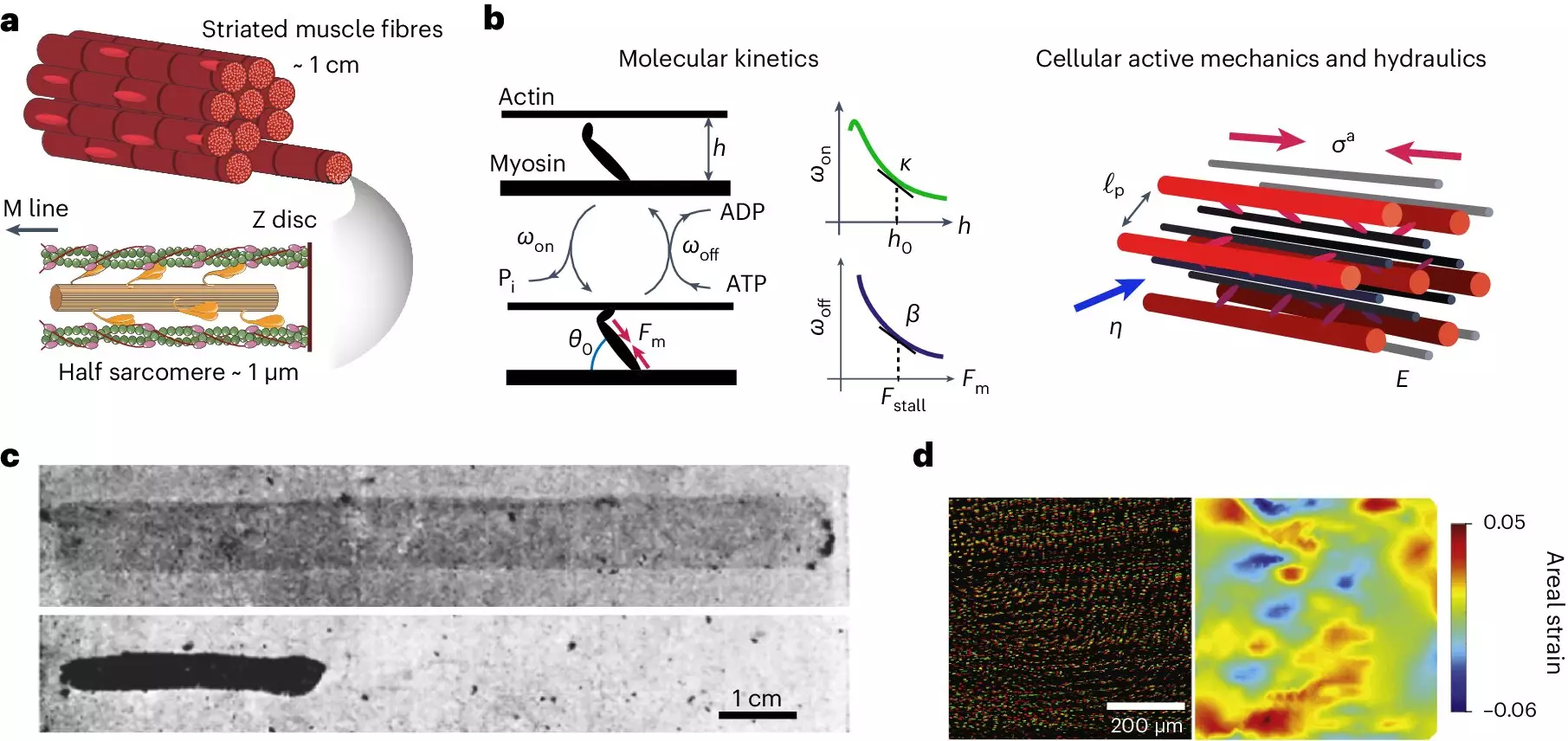Muscle performance has long captivated scientists and athletes alike, yet a deeper understanding of its mechanics has remained elusive at times. Recent research from the University of Michigan sheds light on a fascinating aspect of muscle architecture: the pivotal role of water flow within muscle fibers. The revelation that muscle tissue comprises roughly 70% water underscores its significance—not merely as a passive component, but as a dynamic force that influences contraction speed and overall muscular efficiency.
Traditionally, studies of muscle function concentrated on molecular interactions and biochemical pathways. However, this recent work pivots toward a more holistic approach. By acknowledging that muscles are intricate three-dimensional structures filled with fluid, researchers now recognize that the very movement of water can dictate how swiftly these fibers can react and generate power. This shift in perspective invites us to reimagine what muscle performance truly entails.
Odd Elasticity: A New Dimension of Muscle Functionality
Central to the findings of physicist Suraj Shankar and his team is the concept of “odd elasticity.” This novel form of elasticity enables muscle fibers to generate force not only through traditional means but also via three-dimensional deformations. The researchers observed that as a muscle fiber contracts lengthwise, it also bulges outward—a behavior reminiscent of a sponge being squeezed. This capability signifies a transformation in our understanding of how muscles operate, emphasizing the complexity of their biomechanical properties.
Shankar articulates this breakthrough by likening muscle fibers to “self-squeezing sponges.” Within each fiber exists a porous network of proteins, organelles, and molecular motors, all working synergistically to convert chemical energy into kinetic action. Such a portrayal elevates our comprehension of muscle from a mere biological function to a sophisticated — albeit intricate — system that encompasses multiple layers of activity.
Fluid Mechanics and the Limits of Contraction Speed
One of the striking assertions from the study is that the motion of water within muscle fibers may impose a ceiling on how rapidly a muscle can contract. Shankar’s theoretical model examined various animals—spanning mammals to insects—focusing particularly on those that manifest rapid muscle contractions. The stark contrast in contraction mechanisms between species opened a fascinating dialogue. For example, while large mammals may rely on the nervous system to direct contractions, smaller, faster creatures such as certain insects leverage fluid dynamics to attain remarkable twitch rates.
This nuanced understanding suggests that as movement becomes exceedingly rapid, the flow of fluid through the muscle fiber takes precedence over neural control. Surprisingly, some insects, like mosquitoes, are seemingly on the cusp of the limits predicted by the researchers, hinting at the exciting potential for empirical testing to validate their hypotheses.
Muscle as an Active Engine: A Departure from Conservation Laws
In a groundbreaking premise, this research introduces the idea of muscles functioning like active engines, challenging one of the core principles of physics: the conservation of energy. When muscle fibers contract, the energy generated does not follow the expected patterns we observe in elastic materials like rubber bands. Instead of simply storing energy, muscle can leap into a dynamic state, allowing it to harness and manipulate energy in ways that transcend traditional expectations, which is emblematic of its unique properties.
The designation of “odd elasticity” signifies not only the unexpected bulging of muscle tissue during contractions but also its greater ability to generate power through cyclical deformations. Recognizing these attributes encourages a reevaluation of muscle physiology, hinting that the complexities of muscular performance may involve factors that—until now—had been largely overlooked in favor of a biochemistry-focused narrative.
A Call for a Paradigm Shift in Muscle Physiology Research
The findings presented by Shankar and Mahadevan compel the scientific community to consider a more integrated approach to muscle research, one that transcends molecular intricacies. The narrative of muscle performance must shift towards the acknowledgment of its hierarchical structure and fluid dynamics, recognizing that muscle can indeed be more than just the sum of its parts.
Such revelations have profound implications, not only for science but also for sports performance, rehabilitation, and bioengineering. By fostering a comprehensive understanding of muscle behaviors and capabilities, advancements in these fields can be propelled forward.
Thus, as we explore the peculiarities of muscle mechanics further, we may uncover hidden potentials that could reshape our approach to health, fitness, and beyond. The dialogue initiated by this research thus opens the door to a new frontier in understanding how muscles can turn water, an essential and often overlooked element, into an asset that enhances performance and physical capabilities.


Leave a Reply